14 Nights Bodrum Yacht Charter Itinerary
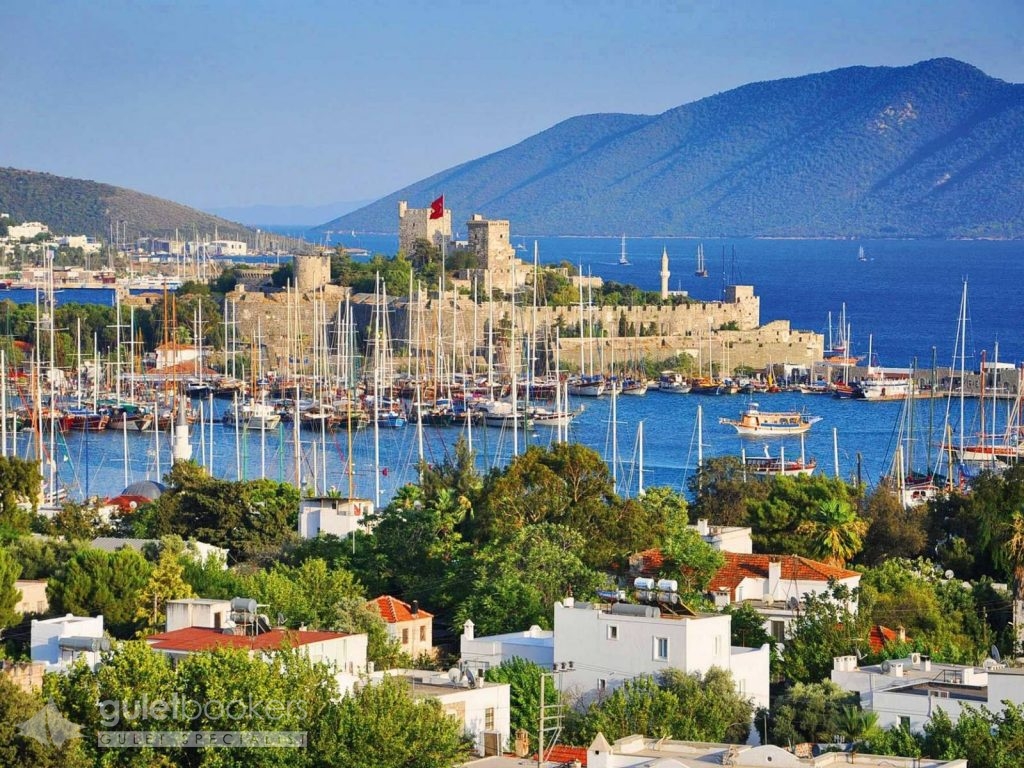
Bodrum has a history that goes back to the 12 th century B.C. The city which was called ‘Halicarnassus’ was the birthplace of Herodotus; the ‘Father of History’ who lived in the 5th century B.C. The ‘Mausoleum’ of King Mausolus (350 B.C.) which is one of the Seven Wonders of the World is in this city. The only structure that survived from the Classical Era is the Amphitheatre. Another place that you should visit when you arrive in Bodrum is the landmark of the city ‘Castle of Saint Peter’. It is one of the best preserved piece of work whose history goes back to the Middle Ages.
Bodrum Harbour is 20 minutes from Bodrum- Milas (BJV) International Airport. Besides its wealth of history, Bodrum is also famous for its nature,crystal and clean beaches and nightlife.
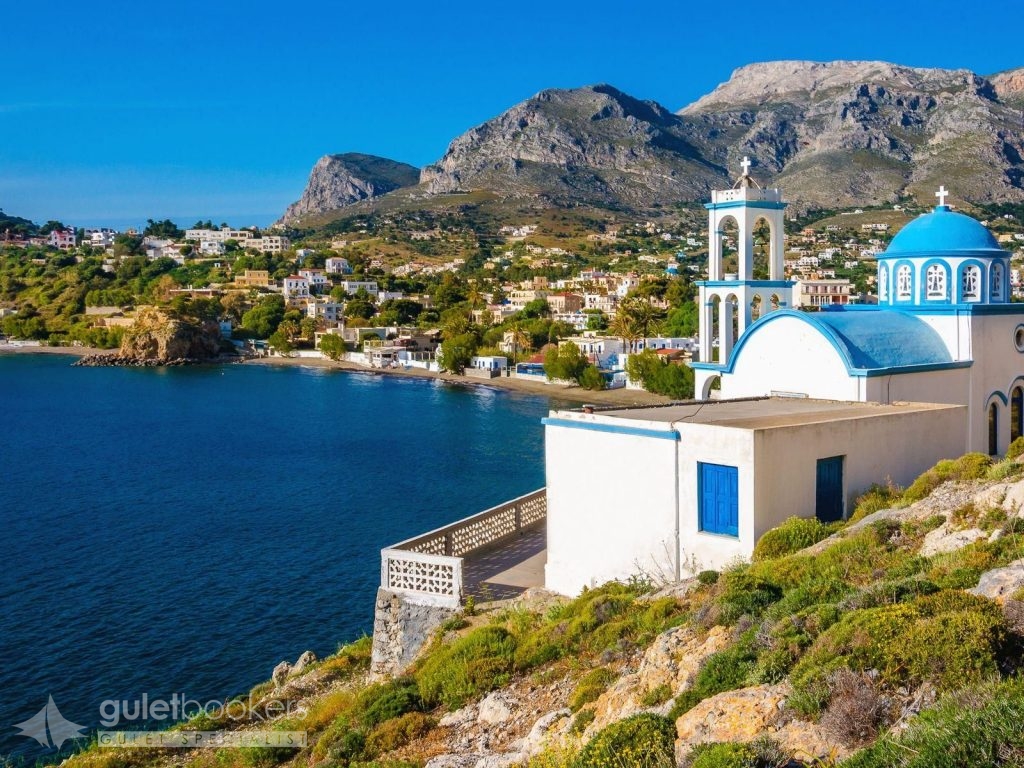
Kalymnos is the fourth largest island of the Dodecanese Group.It has often been called the “island of the sea sponge harvesters” due to the growth of the Greek sponge-harvesting trade in the 19th century. After WWII, Kalymnos remained the only Greek island engaged in the sea sponge-harvesting activity, supplying domestic as well as foreign markets and consequently making Kalymnos known as “the island of sponge harvesters” to the present day. In antiquity, Kalymnos and Leros were known as the Calydnae Islands. The first inhabitants of Kalymnos are said to have been the Kares from Asia Minor. In 1306 it was conquered by the Knights Hospitaller of Rhodes, who remained on Kalymnos until 1522 when the Turks occupied the island. The Italians took over in 1912 and in 1948 it was integrated in Greece. Today it is a tourist destination known worldwide for offering alternative-style vacations and activities such as climbing, scuba diving, mountain hiking and spelunking.
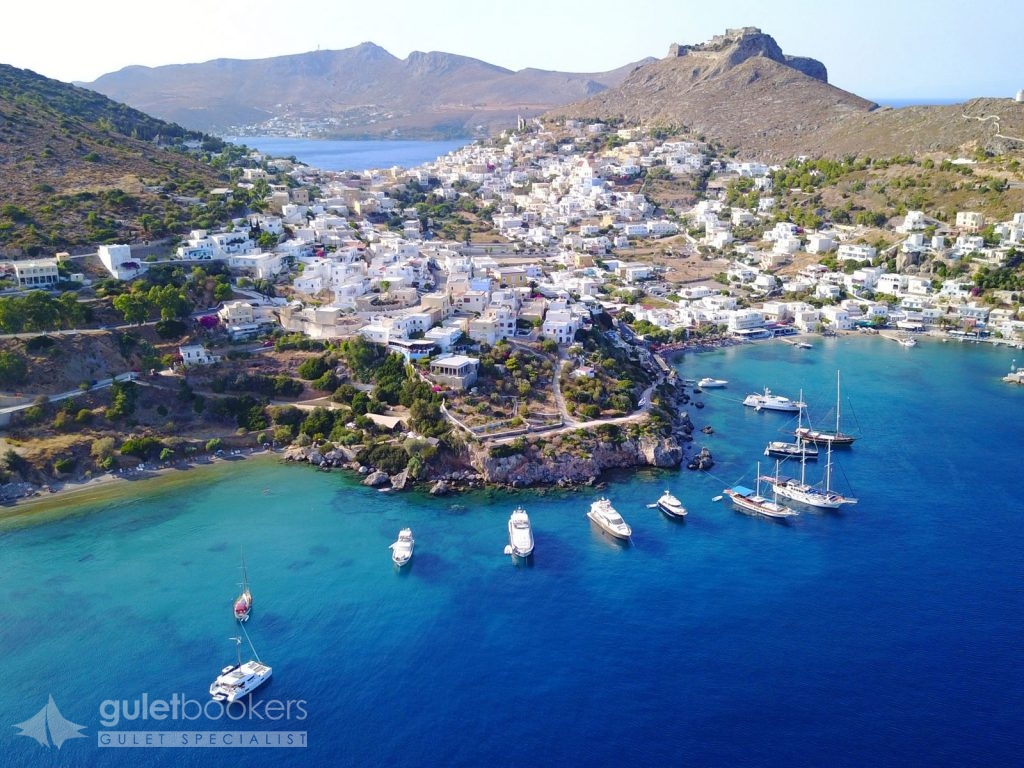
According to Greek mythology, Leros was considered as the island of Artemis, the goddess of forests and hunting. It is an ideal place for quiet holidays. The houses, built in the Italian architectural style, catch the eye. Take your pick among the beaches of crystal-clear waters and visit the towering castle of Panagia on Apityki hill. Coves protected from the elements, hills, large expanses of pine trees and olive groves, and low plains with freshwater streams complete the picture. The history of Leros begins in Neolithic times. In antiquity, the island was an Ionian settlement. In early Christian times (5th-7th c.) settlements began to spread along the coastline. The island was occupied by the Knights Hospitaller of the Order of St John from 1309 to 1522, when it was conquered by the Turks. In 1912, the island came under the Italian rule. The Italians took full advantage of the island’s strategic position and natural harbour. Leros was typically integrated in Greece in 1948. During the Civil War and in the years of dictatorship (1967-1974), Leros used to be a place of exile.
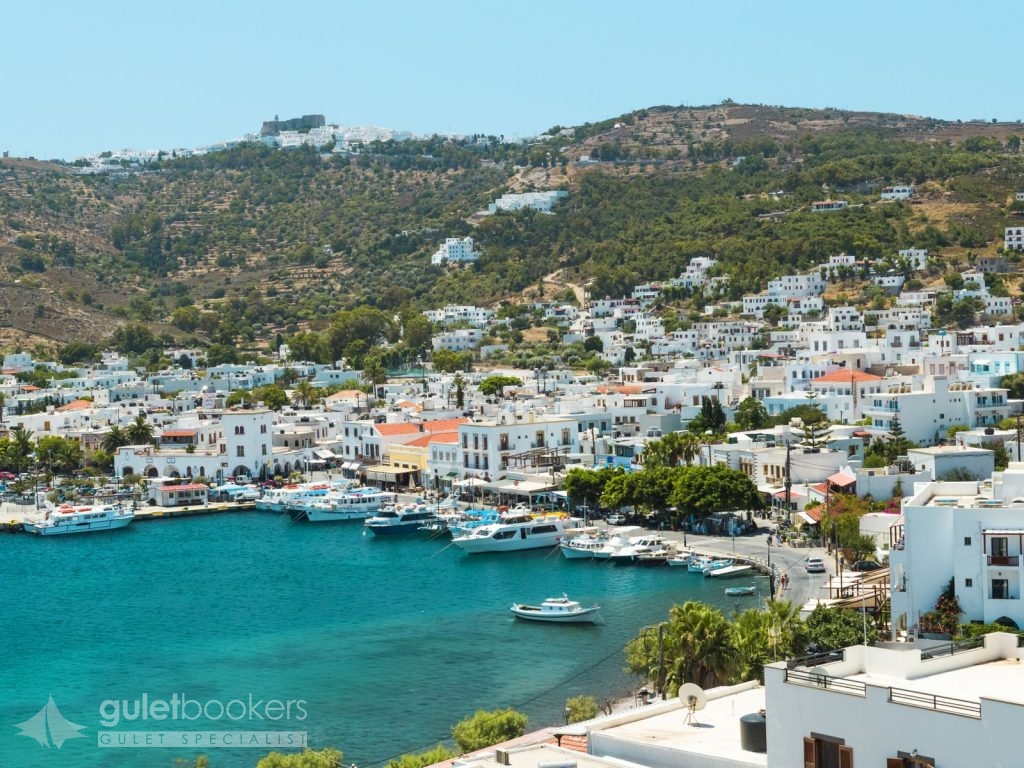
Patmos is known as the “island of the Apocalypse” or “Jerusalem of the Aegean”: John the Theologian, one of Christ’s disciples, exiled to this island by the Roman emperor Domitian in 95 AD,wrote the “Book of Revelation”, the last book of the New Testament in one of the island’s caves.
The “Cave of the Apocalypse”, as it is known today, is one of the most historic and impressive sites in Greece. Patmos was first inhabited in prehistoric times. During the Roman times it was a place of exile. In 1088, the Blessed Christodoulos founded the Monastery of St John the Theologian. Over time the island flourished and the first mansions were built in the late 16th century. The Patmos Seminary (or Patmian School) was built in 1713. The island officially became Greek territory in 1948.
This small traditional town has been built around the monastery of Saint John the Theologian. It is one of the most beautiful and well preserved medieval towns found in the Aegean. The houses, built next to each other, have their windows placed high and leave room for narrow, mazelike paved alleys where you will find dozens of 15th-17th century churches, built with stone from Petrokopio (meaning stone quarry) and Manolakas. The roofs are made with timber from cypress trees and alternating layers of astivi (a kind of shrub endemic to Patmos), seaweed and mud.
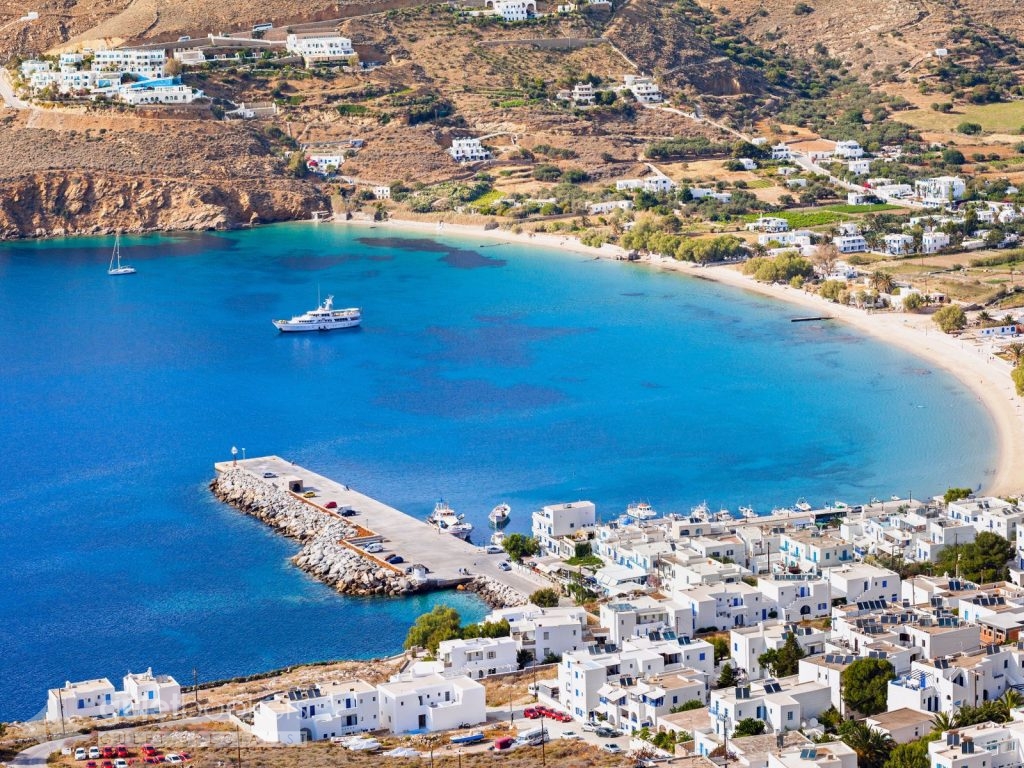
This is the island of “The Big Blue”, a Luc Besson film which was mostly shot in Amorgos. It is located at the easternmost edge of the Cyclades and boasts a singular character. The mountainous landscape with impressive steep mountainsides and cultivation terraces with moderate yields, the steep rocks by the coast in the southern part and the scenic bays with beautiful seashores in the northern part of the island, make up Amorgos’ topography.
The island has been inhabited since Prehistoric times and prospered during the Cycladic Period. At that time, Amorgos developed a thriving trade, navigation and the arts. Three important ancient cities existed on the island, Minoa, Arkesini and Aigiali. During the Roman times, Amorgos used to be a place of exile. Panagia Hozoviotissa Monastery, its landmark, was built during the Byzantine Period. During the Frankish rule, the island suffered numerous invasions, to be occupied in the 16th century by the Turks. Amorgos participated in the Greek Revolution against the Ottoman Empire in 1821. The traditional Cycladic architectural style is evident in all of the island’s villages where local customs practice and a wellknown musical tradition have survived the test of time. A dense network of hiking trails enables hikers to visit the monuments and enjoy the island’s natural beauty. Its area is 121 sq. km, its coastline is 112 k. The crest of the island is Mount Krikellos (821 m.).
It is considered one of the most picturesque towns in the Cyclades, situated approximately in the middle of the island, surrounded by mountains and a hill with old windmills. A castle atop an imposing rock stands out on the island’s highest location, while at its foot lie the town’s snow-white houses. Old churches, traditional white houses with coloured doors and windows, stone paved narrow alleys, small squares, beautiful terraces, stairs decorated with colourful flower pots, small tavernas and cafés charm the visitor with their particular character.
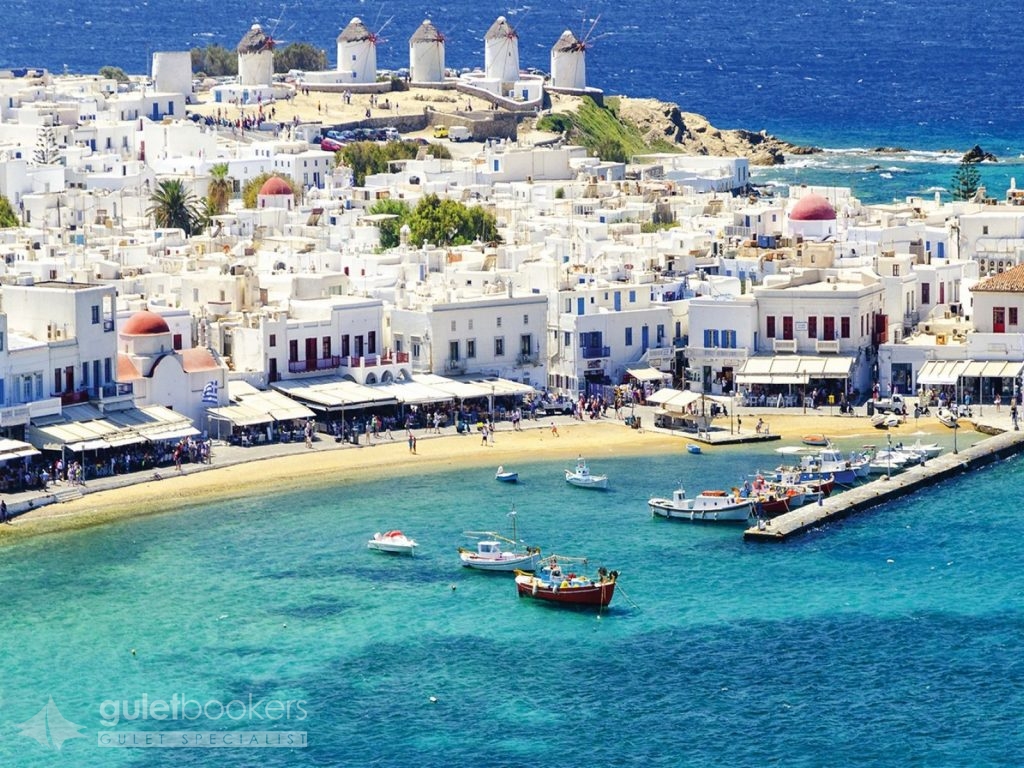
One of the most famous tourist destinations worldwide! Mykonos is the best known Greek island worldwide and a favourite destination among celebrities from all over the planet. It is one of the most beautiful Cyclades islands, with bare hills, stunning sandy beaches, a very well preserved Cycladic architectural style, little white churches and scenery of unique beauty. In recent decades many villas and hotels have been built in harmony with the island’s physiognomy and architecture. Mykonos is located approximately in the centre of the Cyclades group of islands, between Tinos and Naxos. It is the island nearest to Delos with an area of 87 sq. km, a coastline of 82 km. There is an airport connecting the island with Athens, Thessaloniki and other Greek cities.
This is one of the most beautiful towns in Cyclades, one that has maintained its beautiful, unaffected and austere Aegean style intact. Narrow cobblestone-laid streets, small freshly white washed houses with blue windows and small wooden balconies, pots filled with multi coloured and fragrant flowers, churches, museums and streets lined with shops with a bustling trade create a remarkable picture. In the summertime the narrow streets are full of people walking about and visiting the luxurious shops and boutiques or having fun in the famous clubs and restaurants. The harbour is equally picturesque and among the multicoloured fishing boats you get a glimpse of Petros, the famous pelican and the mascot of the island.
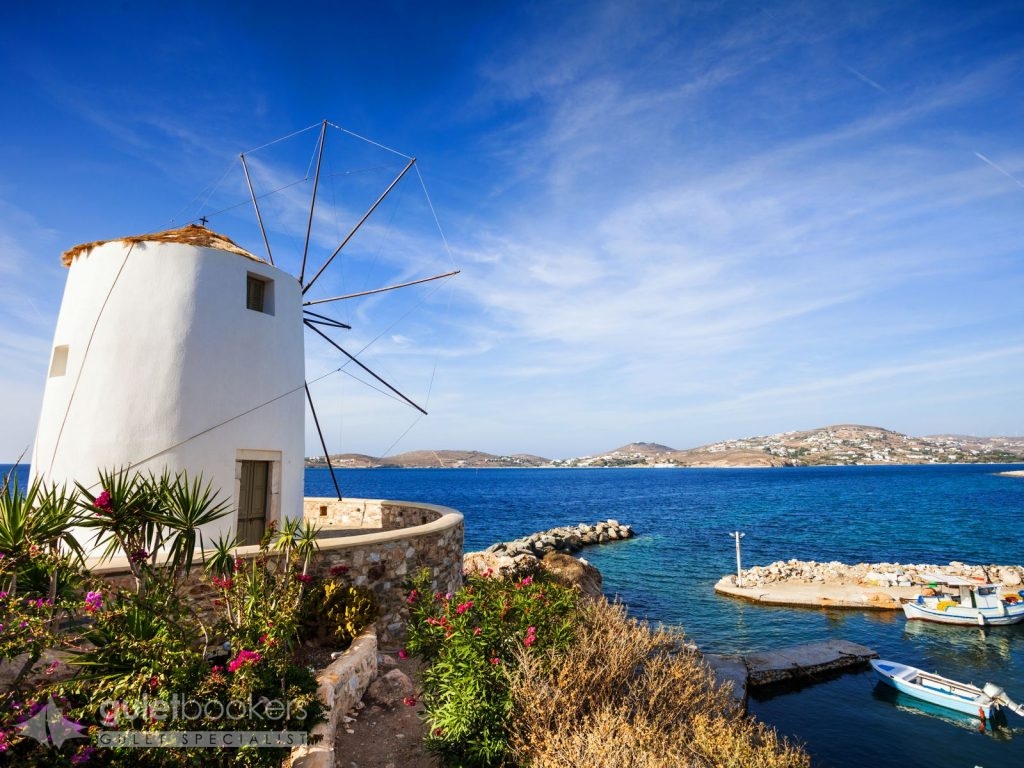
Paros is located in the centre of the Cyclades islands, and is considered one of the most popular holiday destinations with unrivalled natural beauty, vast sandy beaches, crystalline seawaters and stunning scenery. This place is a cosmopolitan holiday destination with a well-developed tourism infrastructure. Historically the island of Paros served as an administrative and commercial centre of the Aegean and often became the apple of discord for many conquerors (Romans, Byzantines, Franks, Venetians and Turks), who all left their mark on the island. The ruins in the archaeological sites and the important historical monuments all over the island are testimony to the island’s great prosperity in the past. Paros was renowned in ancient times for its marble and provided the material for creating many famous monuments. This island has been the place of origin of famous ancient Greek sculptors, painters and poets. In 1207 Paros became a part of the Duchy of the Aegean and in 1537 it was conquered by the Turks.
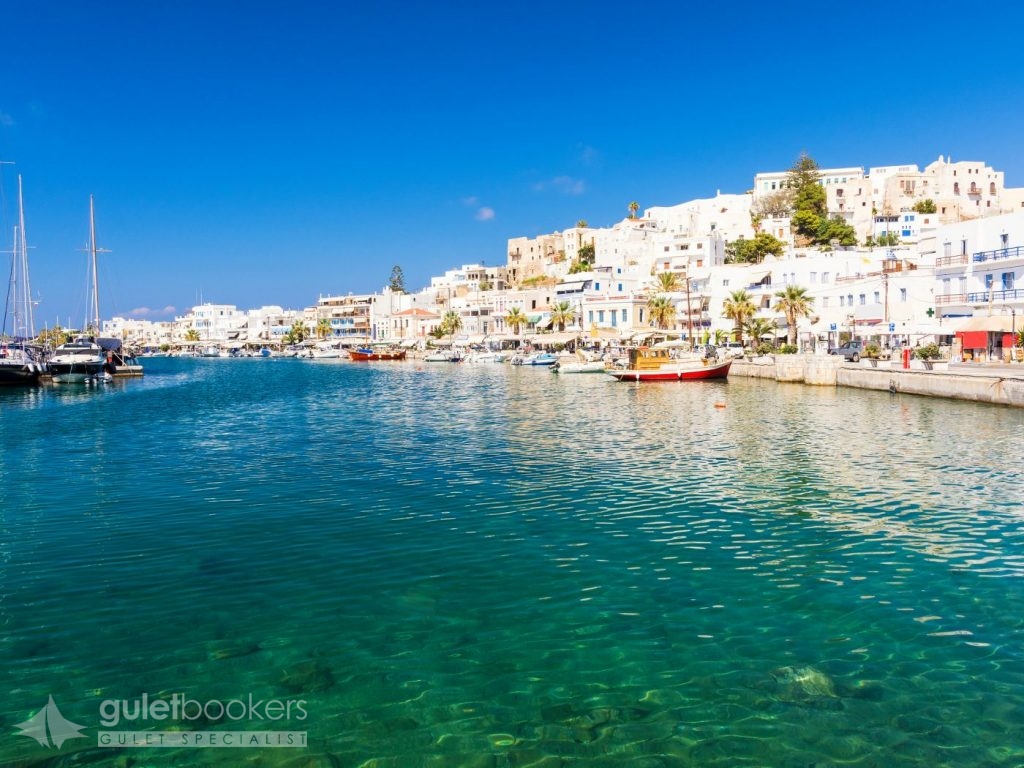
Naxos is the largest and most fertile island of the Cyclades group. It is endowed with an extraordinary landscape, high mountains (mount Zas’ top, reaching 1,004 m., is the highest mountain in Cyclades) and mountainous villages with a singular character.
In antiquity, the god Dionysus was worshipped on the island. According to mythology, Dionysus met a Minoan lady, Ariadne, who had been abandoned by Theseus in Naxos. From the ancient times to the present day the island has been producing citrus fruits of excellent quality, wine that is renowned for its quality and very tasty cheese varieties.
The Carians were the first residents of Naxos, followed by the Cretans and the Ionians. Naxos was already famous in the ancient times for its wine and well known as a worship place of the ancient god Dionysus. During the 6th century BC, Naxos experienced a trading, financial and cultural boom and had been a member of the two Athenian (or Delian) Leagues. During the Venetian occupation, Marco Sanudo founded the Duchy of Naxos (1207). The Venetians remained on the island until 1566. In 1579 it became attached to the Ottoman Empire and from 1830 it is part of the Greek state.
It is the capital town of the island with characteristic Cycladic culture elements and numerous monuments dating to various historical periods. The heart of the town is beating in Old Chora, the old castle town with cobblestone-laid alleys (kalderimia) and the Venetian castle. The houses with Venetian blazons ornamenting their entrances, the narrow arcaded alleys (called “stegadia”), the catholic churches and the fortifications create a unique blend of Cycladic and Mediaeval architecture.
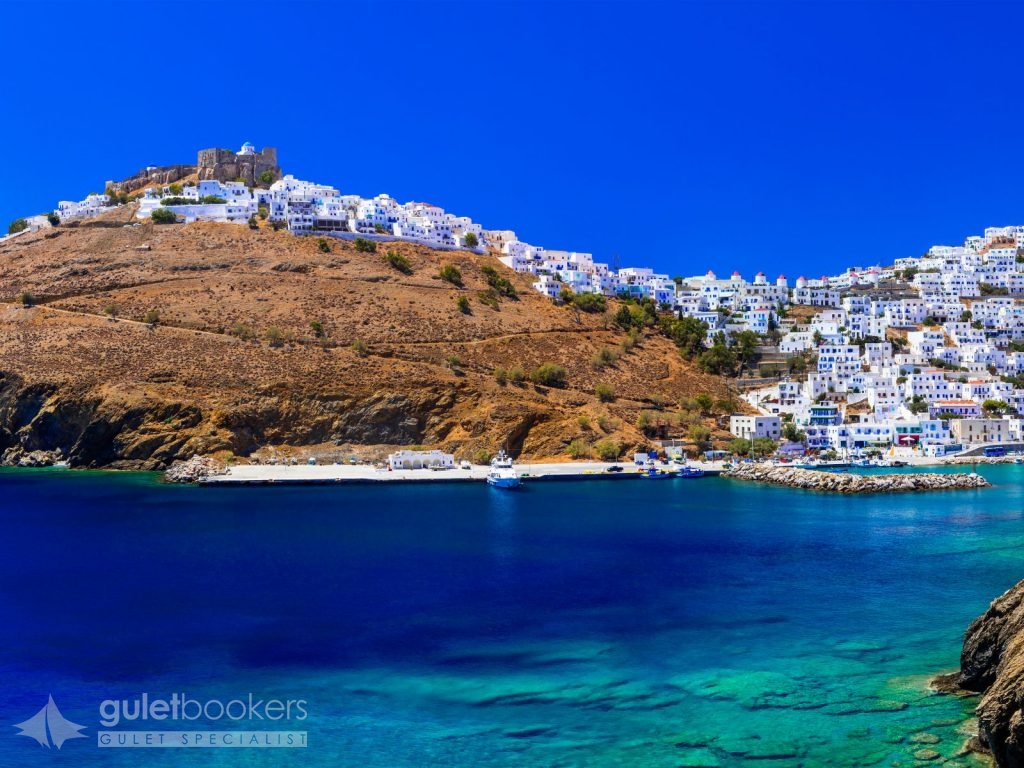
Astypalaia is the western most island of the Group, located exactly where the Dodecanese Islands meet the Cyclades Islands. This is why Astypalaia’s landscapes and architecture are quite similar to those found in Cyclades. It is naturally separated into Mesa Nisi [the inner island] (western part) and Exo Nisi [the outer island] (eastern part) by a thin strip of land less than 100 m. wide. Area: 97 sq. Km.
The island was named after Astypalaia, the daughter of Phoenix and Perimede. In the old days the island was also called Ichthyoessa due to its abundant fishing grounds. It was first inhabited in prehistoric times. In 1204 it came under the Venetian rule enforced by the Guerini family until 1537 with the exception of a brief period in time (1269-1310) when the Byzantine Empire took over again. In 1537 the Turks occupied the island. As is the case with the other Dodecanese islands, Astypalaia remained under Turkish rule until 1912; it was then conquered by the Italians, the British, and the Germans until it was finally integrated in Greece in 1948.
Chora is the island’s capital town and port. It is one of the most picturesque towns in the Aegean, perched on a rock that advances into the sea, forming two bays. On the top, you will see Chora’s castle towering over the town with the strikingly white domes of Evangelistria and Agios Georgios churches, visible over the walls. Around the castle lie Chora’s houses with white washed walls, blue doors and windows, and wooden balcony rails.
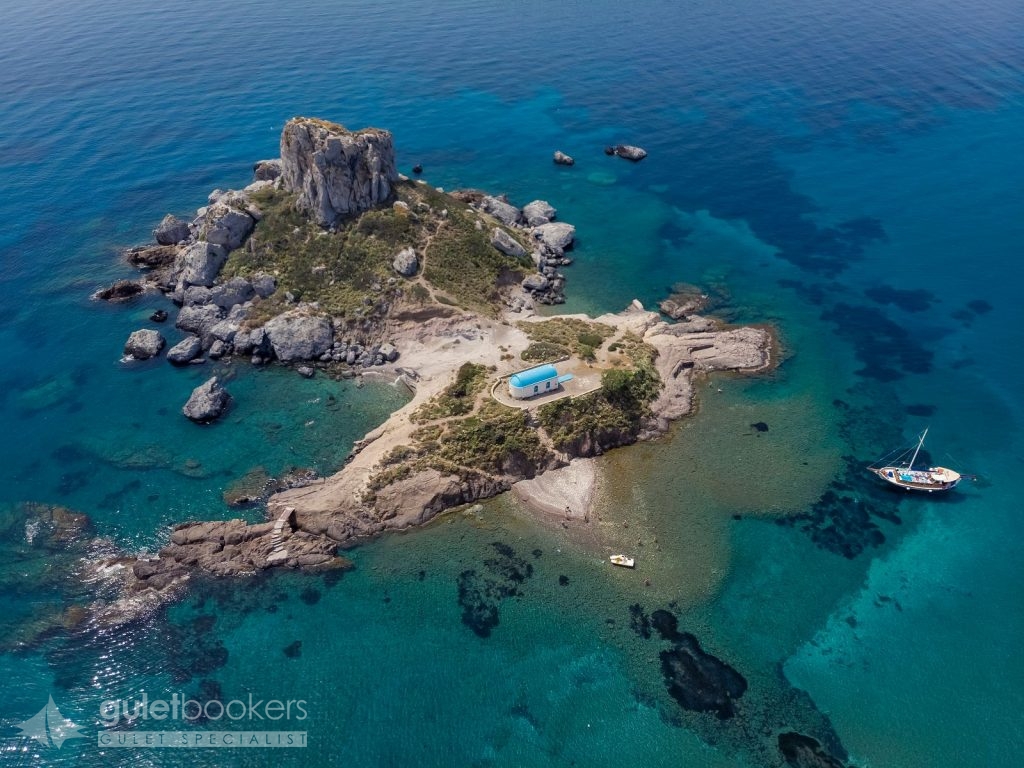
Endless beaches with turquoise waters; lush vegatation and abundantly flowing streams; ancient and medieval monuments; grand edifices of Italian architecture all come to spell one word: Kos, the third largest island of the Dodecanese Group, only 4 miles away from the coast of Turkey. It is said that the island was named after the daughter of Merops, an ancient king – according to legend – who was also known as Koos. It is the birthplace of Hippocrates, the “Father of Medicine” (460-377 BC). It has been populated since neolithic times (5th-4th millenium BC). In the 14th c., the Knights Hospitaller of the Order of St John took over the island, strengthened the fortifications of older castles and built new ones. During the Turkish Occupation, the island suffered onslaughts by many invaders (the Knights, the Venetians, etc.). A number of monumental public buildings were constructed during the Italian rule (1912-1945). The island was integrated in Greece in 1948.
Send Enquiry Discovering of Greek Coast by cruising Dodecanese and Cyclades
This itinerary is only bookable for private charters. If you are interested in a cabin charter, please contact us for more information.
Guletbookers is the independent gulet charter company located in Bodrum - Turkey and dedicated to giving you
the best gulet charter possible from the widest choice of gulets possible.
Get in touch via WhatsApp for Seamless Communication.
Talk to our experts and browse through more yachts.







